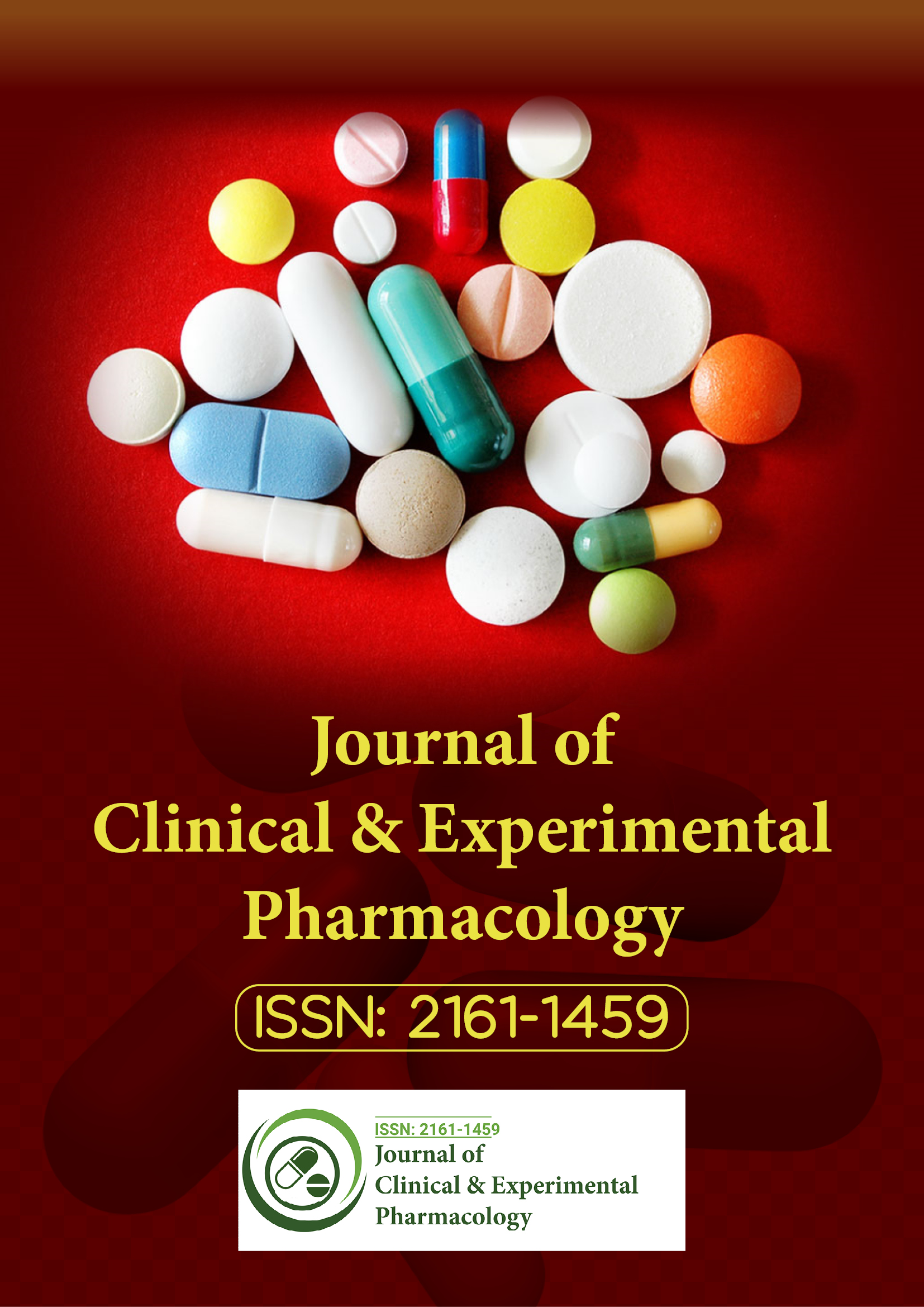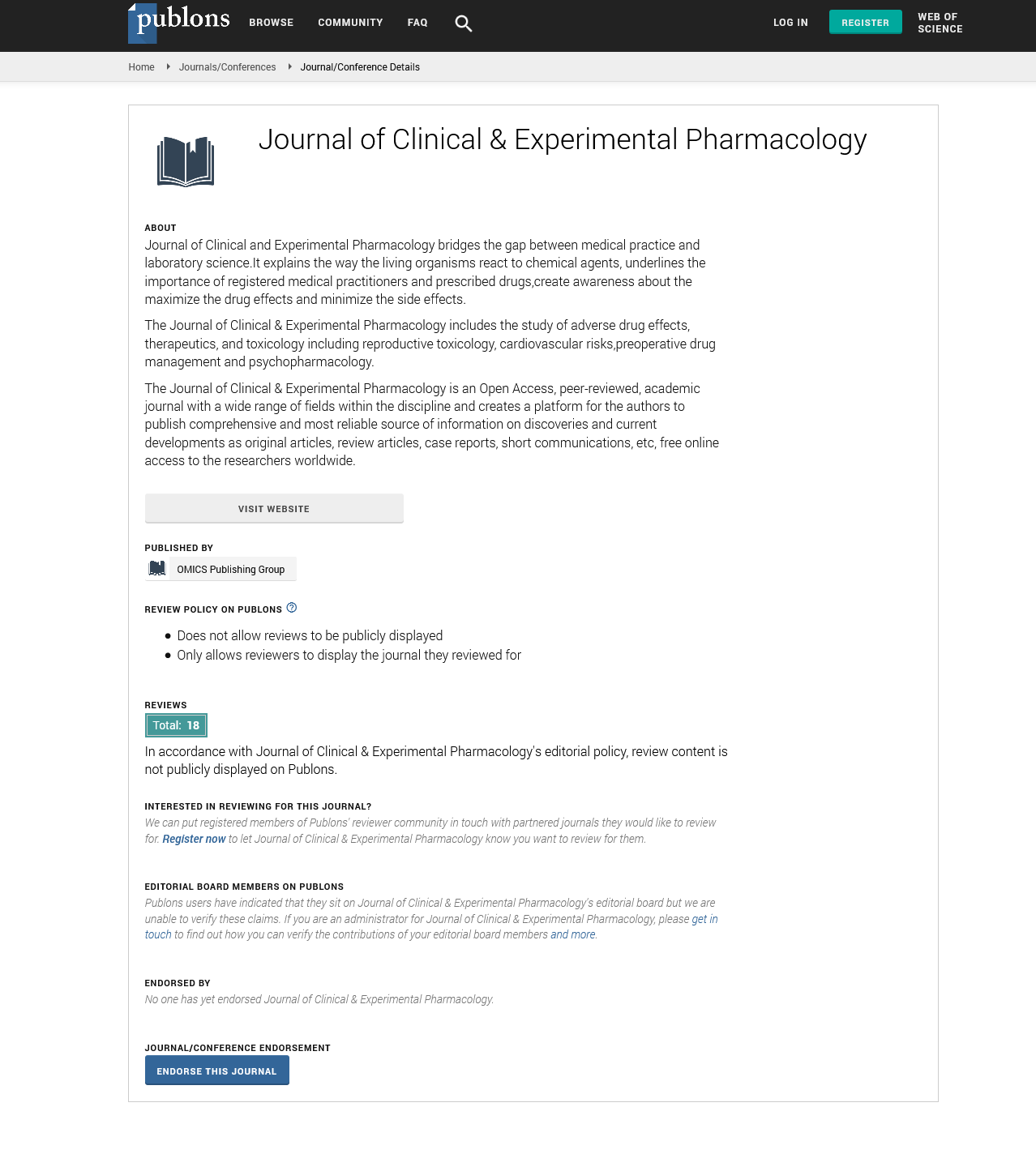Indexed In
- Open J Gate
- Genamics JournalSeek
- China National Knowledge Infrastructure (CNKI)
- Ulrich's Periodicals Directory
- RefSeek
- Hamdard University
- EBSCO A-Z
- OCLC- WorldCat
- Publons
- Google Scholar
Useful Links
Share This Page
Journal Flyer

Open Access Journals
- Agri and Aquaculture
- Biochemistry
- Bioinformatics & Systems Biology
- Business & Management
- Chemistry
- Clinical Sciences
- Engineering
- Food & Nutrition
- General Science
- Genetics & Molecular Biology
- Immunology & Microbiology
- Medical Sciences
- Neuroscience & Psychology
- Nursing & Health Care
- Pharmaceutical Sciences
Influence of CYP3A5 genetic polymorphism on tacrolimus to predict the optimal initial dose requirements in South Indian renal transplant recipients
World Congress on Pharmacology
July 20-22, 2015 Brisbane, Australia
Sreeja S1, Radhakrishnan R Nair1, Noble Gracious2, Sreeja S Nair2 and M Radhakrishna Pillai1
Posters-Accepted Abstracts: Clin Exp Pharmacol
Abstract:
Background: Tacrolimus is a potent immunosuppressant with a narrow therapeutic index that exhibits large inter individual variation. However, So far no study has been carried out on South Indian kidney transplant patients. The objective of the study was to evaluate the potential influence of a functional polymorphism in a CYP3A5*3 gene on tacrolimus concentration/dose ratio in South Indian renal transplant patients. Materials and methods: Twenty five renal transplant recipients receiving Tacrolimus were enrolled in this study. Their body weight, dosage, and concentration of tacrolimus were observed. All the patients were received on a standard immunosuppressive regime of Tacrolimus-Mycophenolate mofetil along with steroids with a starting dose of Tac 0.1 mg/kg/day. CYP3A5 genotyping was performed with PCR and RFLP. Conformation of RFLP analysis and variation in the nucleotide sequence of CYP3A5*3 gene was determined by direct sequencing using a validated automated generic analyzer. Results: A significant association was found between tacrolimus per dose/kg/d and CYP3A5 gene (A6986G) polymorphism in our population. The CYP3A5 *1/*1, *1/*3 and *3/*3 genotypes were detected in 5 (20%), 5 (20%) and 15 (60%) of the 25 graft recipients, respectively.CYP3A5*3 genotypes were found to be a good predictor of tacrolimus L/D in kidney transplant recipients. Significantly higher L/D was observed among non-expressors 9.483 ng/mL (4.5- 14.1) as compared with the expressors 5.154 ng/mL (4.42-6.5) of CYP3A5. Acute rejection episodes were significantly higher for CYP3A5*1 homozygotes compared to patients with CYP3A5*1/*3 and CYP3A5*3/*3 genotypes (40% versus 20% and 13%, respectively).The dose normalized TAC concentration (ng/ml/mg/kg) was significantly lower in patients having CYP3A5*1/*3 polymorphism. Conclusion: This is the first study to extensively determine the effect of CYP3A5*3 genetic polymorphism on tacrolimus pharmacokinetics in South Indian renal transplant recipients and also shows that the majority of our patients carry mutant allele A6986G in CYP3A5*3 gene. Identification of CYP3A5 polymorphism prior to transplantation could contribute to evaluate the appropriate initial dosage of tacrolimus for each patient.

